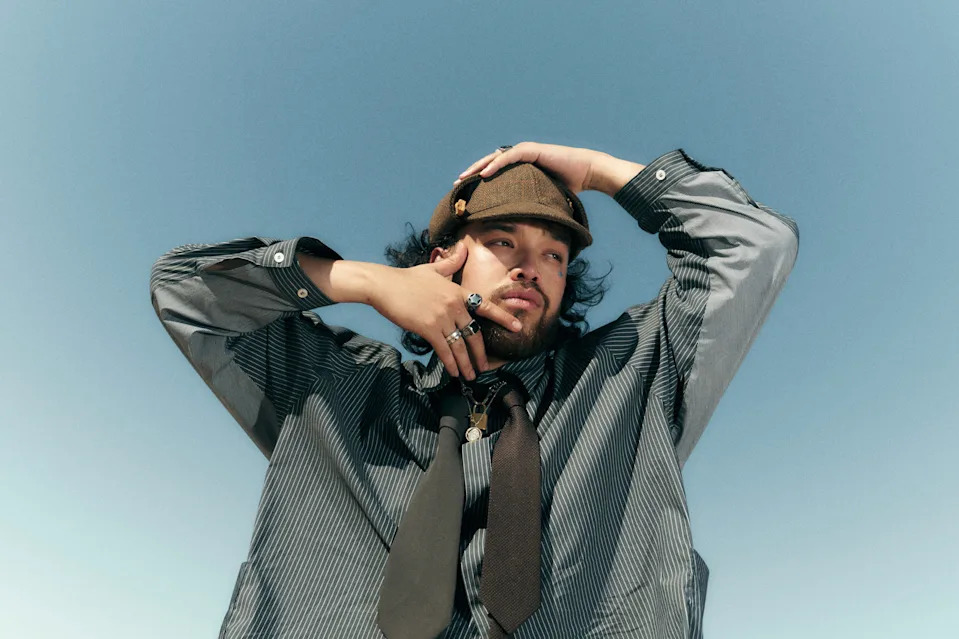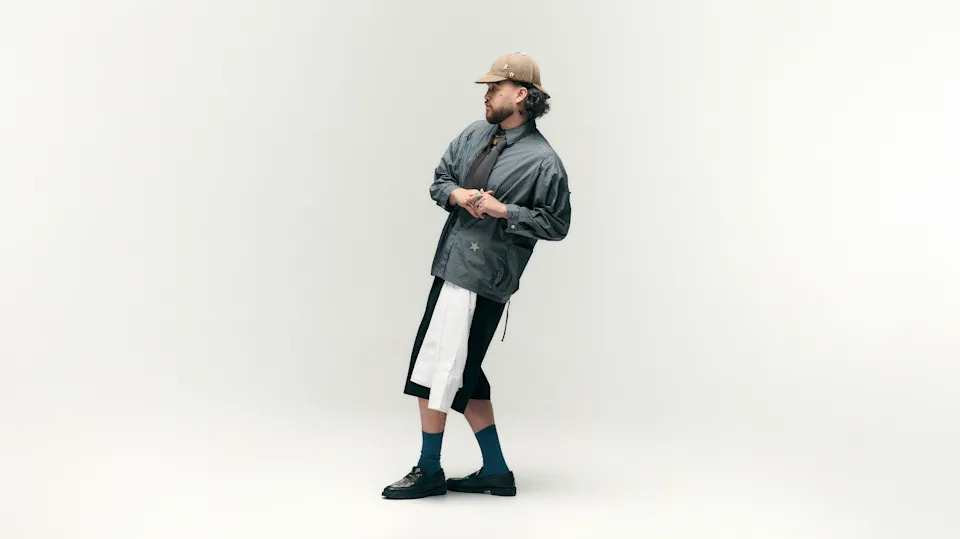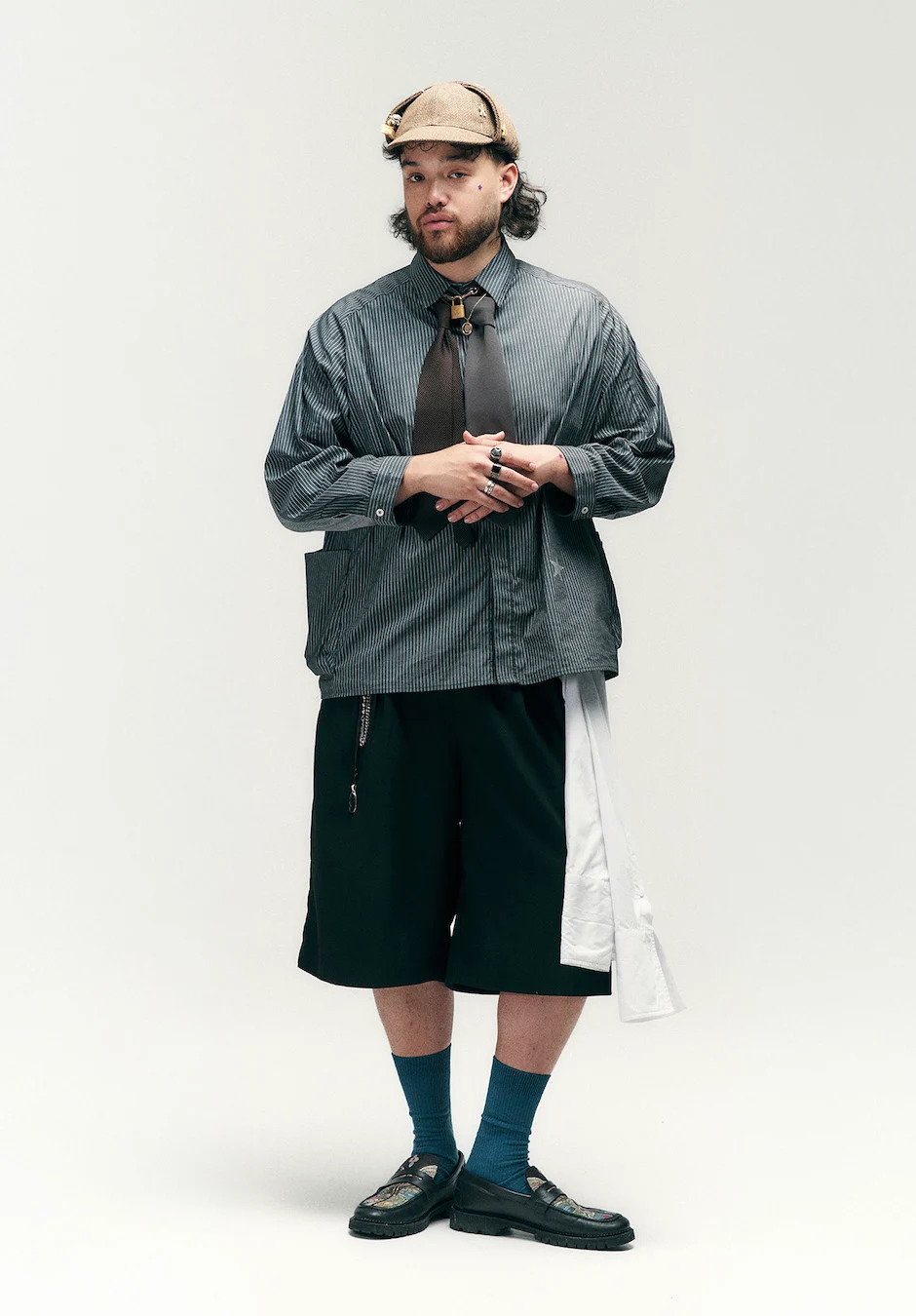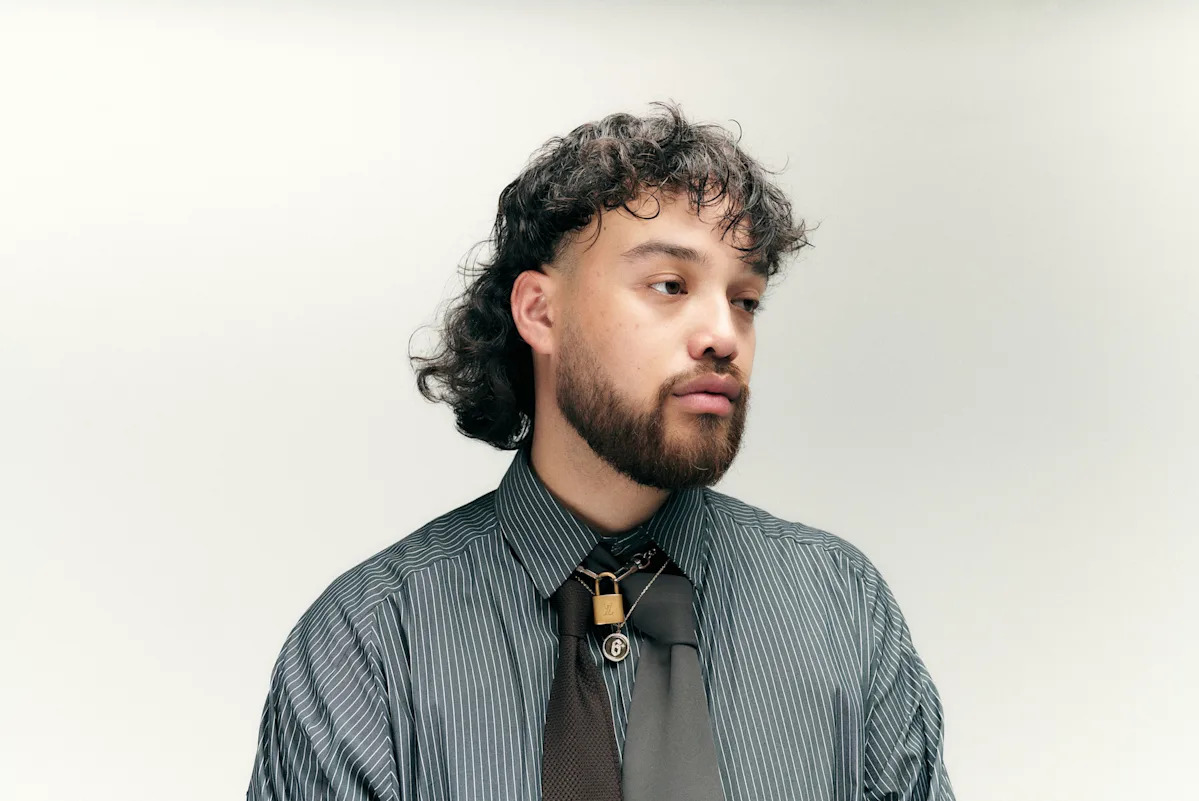BOY SODA’s debut album has been a long time coming. Since 2019, he’s released a string of singles leading up to his 2022 mixtape, YC-TAPE: Vol. 1. This week, the Sydney-based artist’s journey so far culminates in his debut LP SOULSTAR, one of the most highly anticipated local albums of 2025.
The wait has been for good reason. In BOY SODA’s words, the album is the most accurate representation of his artistry, and the most original thing he’s ever done. “I think this album is just very eccentrically me and very much the blueprint of [me],” he says. “Everything I make after this will be informed by so much of what I was able to figure out making SOULSTAR.”
Part of the reason for the wait was the album’s subject matter. SOULSTAR is deeply personal, diving into love, heartbreak, grief, and generational trauma—stories BOY SODA wanted to approach with accuracy, sensitivity, and honesty.
“It took time for me to become equipped, or ready to become equipped, to talk about [these subjects] properly and really delve into them.”
Even so, fear of misrepresenting people and stories lingered throughout the process. It was only by embracing that fear that he found the heart of the project. “I [wanted] to lean into the fear of misarticulating myself and just have a go. And on the other side of that fear was [making] these really close-to-home songs.”

Satoru Takamatsu
Taking time to make the album also allowed BOY SODA to refine his sound. While he’s an R&B/Soul artist on paper, SOULSTAR resists easy categorisation. The record is rooted in soul and R&B but laced heavily with jazz, and coloured by elements of hip-hop, funk, and pop.
That rediscovery of his sound was made possible by finding his artistic community. After moving from Terrigal—a Central Coast town where making R&B was a niche pursuit—BOY SODA finally found his people in Sydney. “[R&B] is not a big thing up there, and I was really trying to find my tribe. I found them in Sydney.”
Part of this tribe includes many artists who feature on the album, including ARIA-nominated producer and songwriter Finbar Stuart, fellow R&B artists A. Girl and Ruby Jackson, and multi-instrumentalist Nikodimos. While much of the LP came together in Sydney studios, it was a trip to the Blue Mountains with upwards of 20 musicians that gave the project its “DNA.” As he recalls,
“It felt over-indulgent being able to have that many live instruments. I’m very aware of the rarity and the privilege that it was to make this album.”
Satoru Takamatsu
Ultimately, SOULSTAR was a labour of love, collaboration and vulnerability—but, significantly, time. It wouldn’t have been the same record had any piece fallen into place prematurely—whether the timing of his move to Sydney, reaching a point in life where he was ready to write the “scary songs,” or carving out the space to find and record with musicians who shared his vision and helped him expand his artistry.
His ethic of letting things unfold and refusing to rush has paid off. One of the album’s singles, “Lil Obsession,” released in January, is fast approaching five million streams, and he now counts more than 350,000 monthly listeners on Spotify. After years of steady grind, he’s finally getting his flowers.
Approaching the release of his debut album, BOY SODA opened up to Complex Australialia about pushing Australia’s R&B scene forward, writing “scary songs,” and making SOULSTAR in the Blue Mountains.

Satoru Takamatsu
Congratulations on the album, man—it’s been a long time coming. You’ve put out a bunch of projects and singles over the years. Why did you decide to put the album out now? Why this moment?
It just feels like the right time, you know? There were a lot of topics I was scared to write about, and I guess I finally felt equipped—or ready to become equipped—to talk about them properly and really delve into them. Scary songs are scary for a reason: you don’t want to get it wrong, and you want to do justice to the things you want to unpack.
I hear that. You’ve also said that SOULSTAR is a reintroduction to Boy Soda. How does SOULSTAR reflect the new you?
I think it could’ve been the first project for me. It’s the first time I’m meeting myself at an articulate musical level, surrounded by amazing musicians. And you know, all my music’s jazz-infused now because I’ve been hanging around with all these cool cats. So yeah, it feels like an introduction to myself, from myself. I’m like, whoa—this is the album I’ve been trying to make my whole life.
This album is very eccentrically me, very much the blueprint of Brae. It’s the most human thing I’ve done, the most accurate thing I’ve done, and the most original thing I’ve done. As an artist, you’re always chasing the dragon’s tail, trying to create something that feels new—you’re not trying to replicate something you’ve heard. This album is a true depiction of the life coming out of my body and soul. Making it, I was just following my intuition, crossing my fingers, and hoping it would be the light at the end of the tunnel. Thank goodness it was.
Everything I make after this is informed by what I figured out while making SOULSTAR. I think it’s the first time people will meet me on this level. Opening up the doors and letting people in—it’s a scary thing to do.

Satoru Takamatsu
It’s a really vulnerable process. When you were making the album, you brought a bunch of musicians to the Blue Mountains to work on it. Tell me about that.
By the time we got to the Blue Mountains, SOULSTAR was a batch of about 15 songs. We knew the album was in there, but it was unfinished. Lil Obsession didn’t even have lyrics yet—just a scratch vocal of the melody. Every track still needed about 20% more to get it across the line. We didn’t know what the album would really become until after those two weeks.
Having amazing friends who were the best possible people for the job was incredible. It really reflects the people I’ve met in Sydney—I feel so seen by them. I’m from the Central Coast, where R&B isn’t really a thing and it’s super niche. I was trying to find my tribe, and I found them in Sydney. Then serendipitously, we all ended up in the Blue Mountains together, making this album. That last 20% came through the live instruments. We were like, there’s the blueprint, there’s the fingerprint. That’s how we found the album’s DNA—it was exhilarating.
I’d been scratching at it for a year, but it wasn’t until those two weeks with everyone together that it really came together. And the Blue Mountains—it’s such a spiritual place to make music.
There are a lot of personal stories on the album. How did you decide what to include?
It was just whatever came up, and letting it come out. With a lot of songs, we didn’t start by saying, “I want to talk about this.” We’d mould the tracks, go through variations, and then a melody would appear. Then it’s like, okay, what’s this melody trying to say? Then the lyrics would match really naturally.
It was very music first, lyrics second—the music dictated what I wanted to talk about. On paper, that sounds like it might get in the way, because you can get distracted by production, but for me, it set the foundation to talk about emotional things. It made me ready to write the scary songs, like about generational trauma or my relation to heritage. Those topics require a lot of sensitivity. I wanted to honour the people I was talking about, and I didn’t want to get anything wrong. But I just leaned into the fear of misarticulating myself and just had a go. On the other side of that fear were these really close-to-home songs.
You’ve spoken about being ready to delve into personal history. What advice would you give other artists who want to take that step but are scared?
I wasn’t ready until I was ready, you know? And there’s something to be said for that. But I think it’s an honourable thing to write songs about things that matter. I was trying to articulate what was coming out of my soul, not just what I was hearing on the radio or playlists.
When you’re ready, and you lean into it—like I said, on the other side of the fear of misarticulation is catharsis and figuring stuff out. It helped me to just say, “I can try again. If I mess up on this song, I’ll do another one.” Sometimes we got it right the first time, other times it took many variations. But I feel relieved, like a weight off my shoulders. It’s therapy.
Some people run away from their trauma. This feels like you ran toward it—that’s a really honourable thing to do.
Yeah, run at it while you’re scared, screaming, having a tantrum (laughs).

Satoru Takamatsu
Talking about the album’s influences, I hear a lot of references. Frank Ocean, current Bieber, Anderson .Paak. And maybe this is outlandish, but I even hear Outkast.
That’s not outlandish—I’ve been talking about 3K all week! Pretty much all the names you mentioned—everything you hear is the result of studying those people—Outkast in particular. There are so many things to grab hold of in their music and production—whether it’s the emotion, the pocket, or even the fucking snare.
Finally, you’re approaching five million streams with “Lil Obsession.” You might even hit it by the time this comes out. R&B isn’t the most popular genre in Australia, and you’ve worked hard to push the sound forward. How does that feel?
It’s on the way! I think I learned not to put too much weight on numbers—they’re not always reflective of how good the art is. And expectations of how something should perform can be dangerous. But at the same time, there’s a part of me that never thought it would happen. I thought I was missing something, like I wasn’t getting it right. It’s that “trust the process” thing—but I was like, “ f**k the process, where’s my money?” But I let it unfold naturally. Now there are commas in my streaming numbers.As for R&B in Australia, it’s still very early days. The people who do well now, who put their best foot forward and make timeless music, will be the pioneers. They’ll be the leaders of the genre here.
You can stream SOULSTAR from October 3rd.
Related News
Nicki Minaj Blasts Cardi B With Fertility Rant, Cardi Points Out Today Is Nicki’s Son’s Birthday
Cardi B Claps Back After Nicki Minaj Disses Album: ‘She Was Streaming “Magnet” Hard as Hell Huh??’

